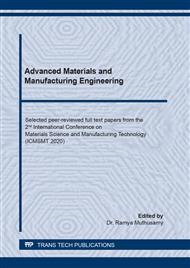p.44
p.53
p.62
p.73
p.82
p.92
p.102
p.110
p.121
Effect of Bacteria Subtilis on Concrete Substituted Partially and Fully with Copper Slag
Abstract:
Copper slag can be considered as waste product which could have a favorable future in construction industry as a substitution to fine aggregates in concrete. Concrete is a very brittle material and in due course of time it tends to crack .These cracks, expands and corrodes the steel reinforcement which intensify the cost of maintenance and decreases the structural stability over periods of time. To avoid crack formation in concrete microorganism can be directly added to concrete during the mixing stage which is called as bacteria impregnated concrete. Bio concrete makes use of calcium carbonate precipitation in the presence of the suitable media results in microbial induced calcite crystals. This work reports an experimental procedure to investigate the effect of using copper slag in concrete when it is remedied by microorganism. Five series of concrete mixtures were prepared with different proportions of copper slag ranging from 0%, 25%, 50%, 75% and 100% to fine aggregate. Copper slag concrete mixtures were treated with 1% and 2% microorganisms by the weight of cement. All Specimens were cured for 7, 14 and 28 days before testing. Mechanical properties such as Compressive strength and Flexural Strength of Bacterial copper slag concrete were found and compared with the conventional concrete. The highest Compressive strength obtained was 45.6 Mpa at 75% substitution of copper slag with 2% microorganism and the corresponding strength for control mix was 26.8Mpa. The highest flexural strength obtained was 10.3Mpa and the corresponding strength for control mix was 4.5Mpa.It has been observed that 75% replacement of copper slag can be effectively used as a replacement for fine aggregate when it is treated by Microorganisms.
Info:
Periodical:
Pages:
82-91
Citation:
Online since:
January 2021
Authors:
Price:
Сopyright:
© 2021 Trans Tech Publications Ltd. All Rights Reserved
Share:
Citation:


